Have you ever wondered how to attach a sandpaper to an orbital sander? Do not worry, as this epic guide has all the answers and useful tips you need. Get ready to learn everything you need to know about attaching sandpaper to an orbital sander – from how it works, what tools are required, and the different types of sandpapers that work best with each type of surface. Prepare yourself for an ultimate experience on the attachments between sandpaper and orbital sander like never before!
What is an Orbital Sander
It consists of an electric motor that spins a round plate or pad at high speed. The plate has abrasive paper attached to it which is what does the actual work. Orbital sanders are often used to quickly remove old paint and varnish, as well as for finishing off furniture and other wooden objects.
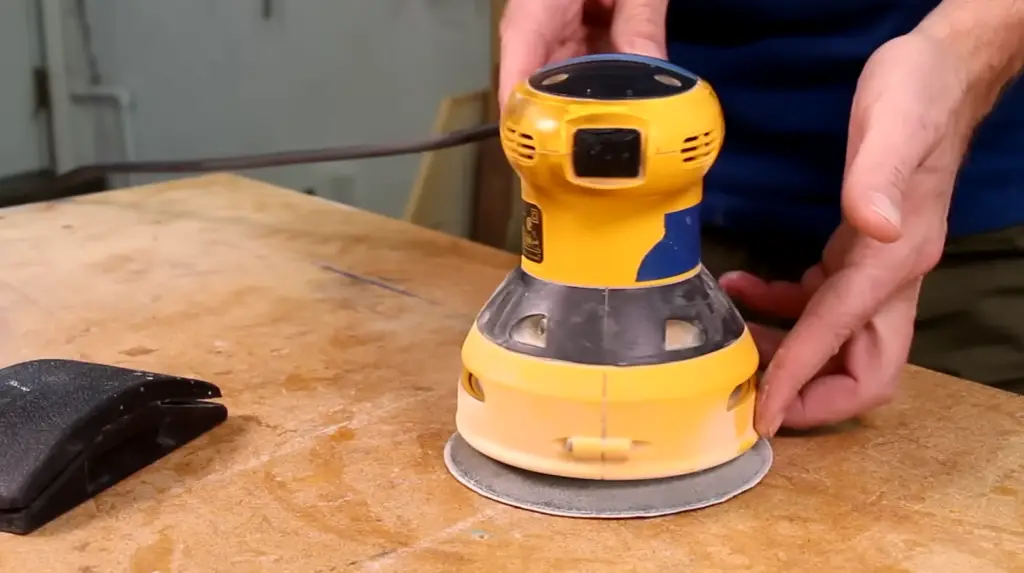
They can also be used for sanding down body filler on cars and smoothing out rough edges on metal objects. They can be operated with either one hand or two hands depending on the user’s preference, so they offer great flexibility in their usage. Some models even come with dust collectors built-in, so the user doesn’t have to worry about creating a mess. An orbital sander is an invaluable piece of equipment for anyone who works with wood or metal, and it can make even the most tedious task much quicker and easier. With proper care and maintenance, they can last a lifetime. [1], [2], [3]
Can You Attach a Sandpaper to Orbital Sander
Yes, you can easily attach a sandpaper to an orbital sander. In fact, it’s one of the key components of using an orbital sander. It’s important to note some general rules when choosing a sandpaper include:
- Choose a sandpaper with a grid-grit size that is right for the job – too coarse of a grit can cause deep scratches on softwood surfaces, while too fine of a grit won’t be effective on hardwoods. The coarser the paper, the more aggressive it will be in removing material.
- Choose a sandpaper that is compatible with your orbital sander – some sanders require special types of paper while others are more flexible. It’s important to make sure you are using the right type of sandpaper for your specific tool.
- Consider using hook and loop backed discs if you are going to be changing discs often. These discs are easy to attach and detach from the sander, so you won’t have to worry about struggling with sticky adhesive. [1], [2], [3]
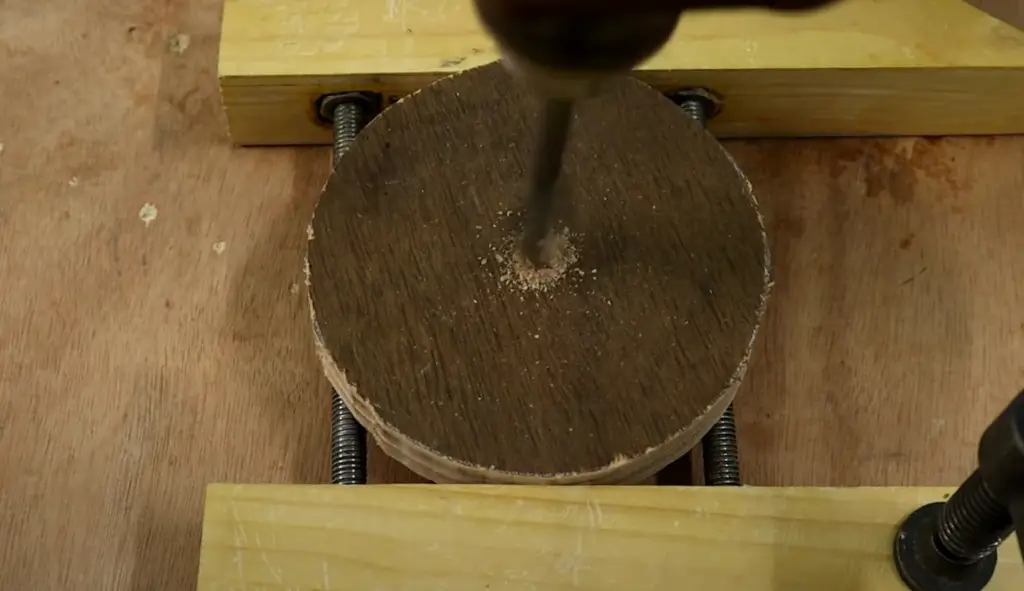
How to Attach a Sandpaper to an Orbital Sander
Once you have chosen the right sandpaper for your orbital sander, attaching it is actually quite simple. In this section, we will go over the basic steps of attaching a sandpaper to an orbital sander.
Keep the size of your sander in mind
It’s important to keep in mind the size of your orbital sander when attaching the sandpaper. Most sanders come with a round pad that is designed to fit standard sizes of sandpaper (i.e., 4-1/2 inch, 5 inch, etc.). If you are using an unusually large or small sander, make sure to purchase the correct size of sandpaper for it.
Usually, you will need to fold the sandpaper in two and cut it a little bit smaller than the size of the pad. This is especially important if you are using an unusually large or small sander, as it will help ensure that the paper fits correctly on the pad without any extra overhang.
Attach the sandpaper to your orbital sander
Once you have chosen and cut your sandpaper, it’s time to attach it to the orbital sander. Most orbital sanders come with either a hook and loop system or adhesive-backed discs for attaching sandpaper. The type of paper you use will depend on which type of attachment system your sander has.
If you are using the hook and loop system, simply place the disc onto the sander’s pad and press down firmly until it is secure. If you are using adhesive-backed discs, peel off the backing paper and stick the sandpaper to the sander’s pad. Make sure that all parts of the sandpaper are securely attached to avoid any slipping or shifting while in use.
Double check if the paper is secure

Finally, be sure to inspect the sander before each use for any signs of wear or tear on the pad or disc. If there are any signs of wear, replace the sandpaper immediately as a precautionary measure.
Once your sandpaper has been successfully attached to your orbital sander, you should be ready to start sanding! Remember to always wear protective gear when using an orbital sander, as it can create a lot of dust. Additionally, make sure that your work area is well ventilated if possible. [1], [2]
How to Attach a Sandpaper to a Random Orbital Sander
Now let’s take a look at how to attach sandpaper to a random orbital sander. The process for attaching sandpaper is similar for both types of sander, but there are some subtle differences that you should be aware of.
Random orbital sanders require special discs with specific holes in order to attach the paper securely. These discs usually come with adhesive-backed paper and can fit most sizes of random orbital sanders. Place the disc onto your sander’s pad and press firmly until it is secure. Then peel off the backing paper from the disc and carefully stick the sandpaper on top of it, making sure all parts of the paper are attached securely. Once all parts of the paper have been secured, you should be ready to start sanding.
If your random orbital sander is particularly large, you may need to buy special velcro-backed discs in order to attach the sandpaper securely. These discs fit most sizes of sanders and can be purchased at any hardware store or online. Simply stick the disc onto your sander’s pad, then peel off the backing paper from the disc and carefully place the sandpaper on top of it. Again, make sure all parts of the paper are attached securely before starting to use your sander. [1], [3]
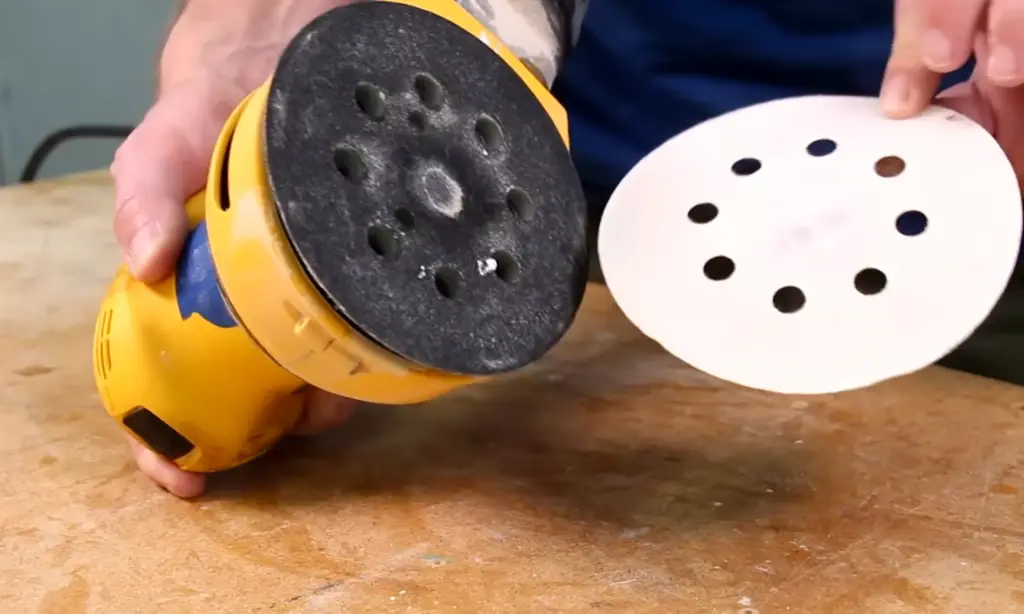
FAQ
How do you hold sandpaper in place?
The easiest way to hold sandpaper in place is by using a backing pad. This will provide support for the entire sheet of sandpaper and help it remain in place during use. To attach the sandpaper, you’ll first need to make sure that the backing pad is securely attached to your orbital sander. Start by centering the paper on top of the backing pad and then press down firmly in order to secure it. If needed, you can use a spray adhesive or even double-sided tape to further secure the sandpaper. Once attached, make sure all corners are tightly adhered and not buckling up.
What are two ways sanding discs are attached to random orbital sanders?
There are two main ways to attach sanding discs to a random orbital sander. The first is with hook and loop fasteners, where the disc has an adhesive back that sticks to a hook-and-loop pad attached to the sander. This type of system allows for quick attachment and removal of the disc during sanding tasks. The other way to attach discs is through a clamped system, which requires the user to clamp the disc into place with a lever or knob. While this method takes slightly longer than using the hook and loop fasteners, it provides a more secure hold on the disc and can be more suitable for larger jobs that require extra stability.
How do you attach sandpaper to a floor sander?
Attaching sandpaper to a floor sander is an easy but important process for achieving professional-looking results. The first step is to make sure that the sander is clean and free of dirt, dust, and debris. Next, you will need to select the correct sandpaper grit for your project (coarse for heavy work, medium for general work, and fine if you want a smoother finish).
Once the right abrasive has been chosen, align one edge of the paper with the center of the sander’s pad. Then press down firmly on top of it while pressing out any air bubbles from underneath. Finally, use two pieces of masking tape along each side of the paper to secure it in place. After this process is complete, the sander can be turned on and ready to use.
How do sanding discs attach?
Sanding discs attach to the sander through a hook and loop system. On one side of the sander, there will be a hook-and-loop pad attached with Velcro-style fasteners. The sanding disc attaches to this pad by pressing it firmly against it so that the hooks on the backside of the disc interlock with the loops on the pad. The force of pressing is often enough to create an adequate connection between both surfaces, but if you’re having trouble getting them to stay in place, you can use some adhesive spray or other means of securing them firmly together.
What are the 5 most common mistakes people make with a random orbital sander?
While orbital sanders are relatively easy to operate, there are still some common mistakes you can make if you’re not careful. Here are the five most common mistakes people make with a random orbital sander:
- Not cleaning the sandpaper often enough – Failing to clean your sandpaper regularly is one of the biggest mistakes that people make when using an orbital sander. Dust and debris will accumulate on the surface of your sandpaper which can cause it to be less effective, so it’s important to take time out to clean your sandpaper after each use.
- Not using proper safety equipment – It’s important for anyone operating an orbital sander to wear protective gear such as safety glasses, dust masks, and ear protection. Not doing so could put you at risk of developing eye, ear, and respiratory problems due to the dust particles that will be released during sanding.
- Using too much pressure – Applying too much pressure when operating an orbital sander can cause it to start vibrating which can make it difficult to control. It’s best to apply only light pressure as this will help keep the sander from vibrating and provide a more even finish.
- Not changing the sandpaper often enough – Sandpaper wears down over time so it’s important to change it out for new paper regularly in order to ensure optimal performance of your orbital sander.
- Not checking the power cord frequently – Checking the power cord of your orbital sander is important as a frayed or damaged cord can cause an electrical shock. Make sure to inspect the power cord for any signs of damage before using your sander and replace it if needed.
Useful Video: The Only 3 Sandpapers You Really Need | SANDING BASICS
Conclusion
Orbital sanders are great tools for a variety of woodworking projects. When using an orbital sander, it’s important to know how to properly attach the sandpaper, in order to get the most out of your tool.
In this article, we’ve provided an in-depth guide on how to attach a sandpaper to an orbital sander. We discussed the different types of sandpaper and their various grit sizes, and outlined the steps for properly attaching the paper to your sander. By following these simple steps, you can make sure that your paper is securely attached and ready for whatever project you’re working on.
To ensure the longevity of your orbital sander and sandpaper, avoid over-tightening when attaching or removing sandpaper from the machine and be sure to check for wear and tear periodically. Additionally, use caution when operating any power tool and practice safety measures like wearing hearing protection and eye protection while you work. With proper care and maintenance, your orbital sander will continue to provide quality results for many woodworking projects to come. Happy sanding!
References
- https://www.hunker.com/13401631/how-to-put-sandpaper-on-an-orbital-sander
- https://www.obsessedwoodworking.com/how-to-attach-sandpaper-to-an-orbital-sander
- https://bestorbitalsander.com/how-to-load-sandpaper-on-a-random-orbital-sander-a-simple-diy-guide/






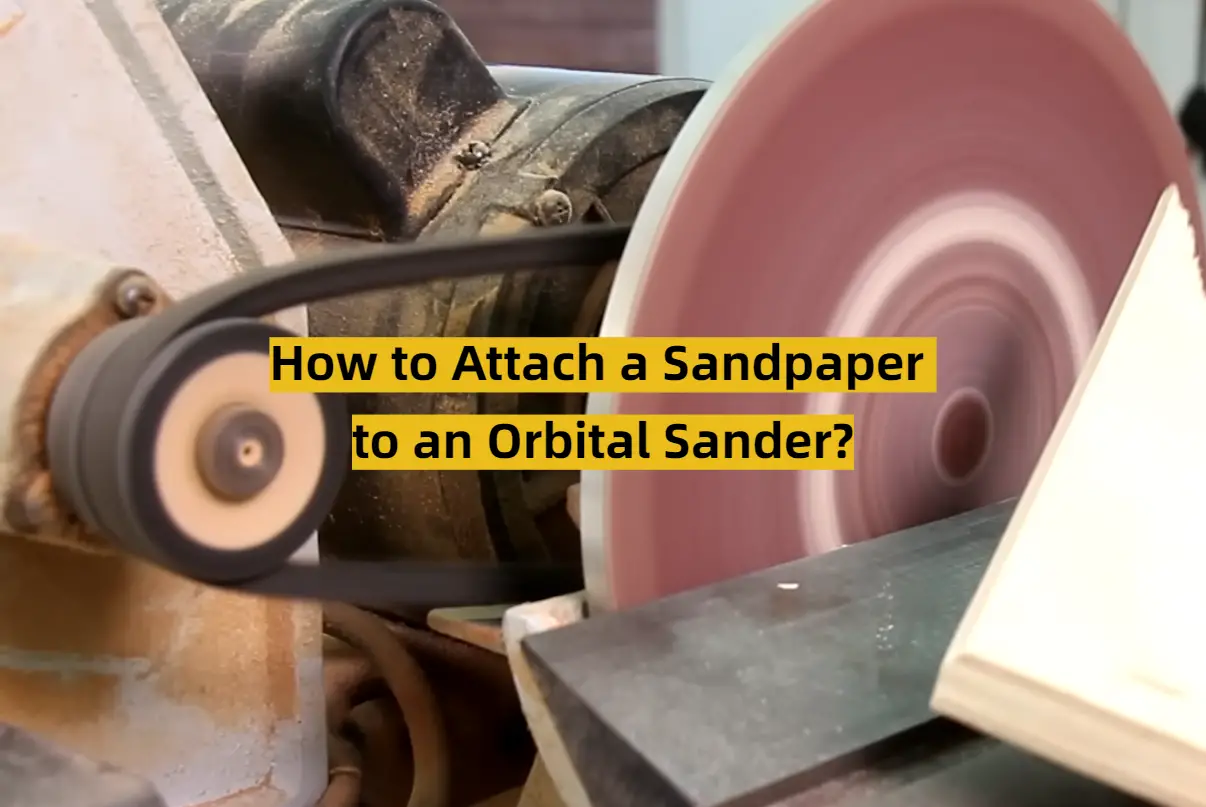




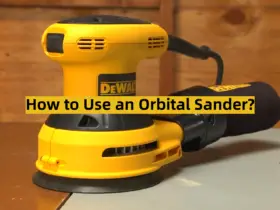



Leave a Reply